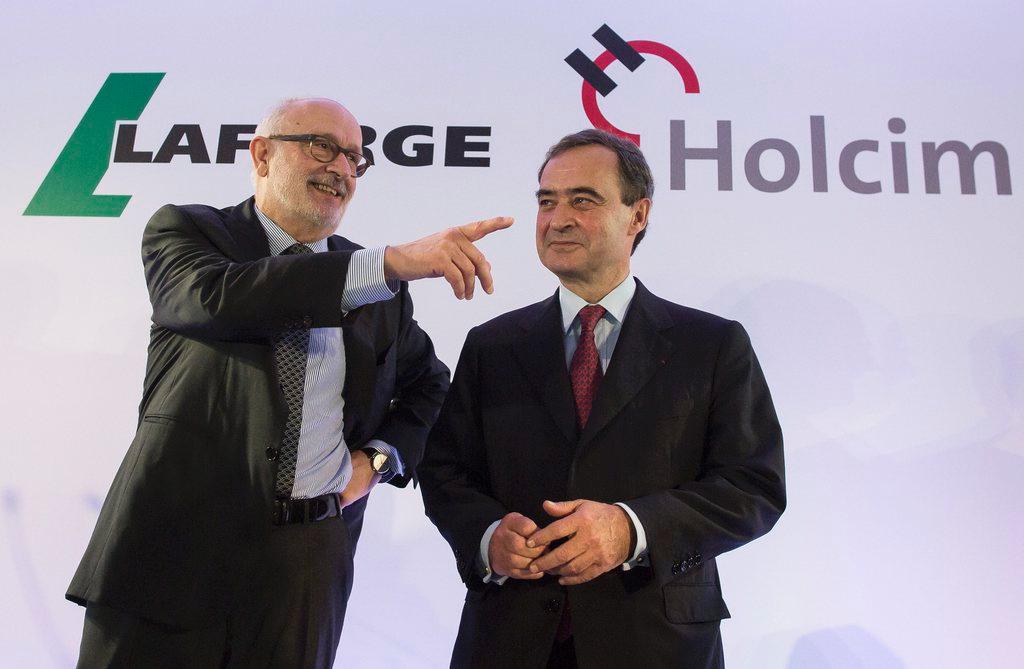Holcim’s cement deal merits a harder line from the watchdogs

You need look no further than Holcim’s fourth-quarter results this week to understand why it has been so keen to pursue its merger with Lafarge. Operating profits were up nicely, as were margins, thanks to higher pricing and cost cuts. The Swiss company was upbeat about the future, saying it expected cement volumes to rise everywhere next year – except in Europe.
The main purpose of the Holcim/Lafarge tie-up was to reduce capacity in Europe, where the sector has long been plagued by overcapacity, from nearly 30% of combined sales now to about 20%. The merger’s logic is, otherwise, hazy and the cost savings are just promises for the moment. Bosses of both groups must therefore have heaved a sigh of relief when the competition authorities in Europe waved the deal through in December without even moving to a second-stage, more detailed investigation.
Given the structure of the deal, not to mention the fact that the whole industry has been under scrutiny by the European Commission for cartel behaviour and price-fixing since 2008, such insouciance on the part of the regulator suggests canny lobbying in Brussels on behalf of the companies. The approval must have come as an unexpected Christmas present for both.
There are still some regulatory hurdles left to clear. Antitrust authorities in other jurisdictions including India, the US and Canada are still looking at the deal. And the purchase of a large chunk of the combined group’s European assets by the Irish cement company CRH must also be approved by the regional regulator.

More
Financial Times
External linkIt is not too late for the EU to take a tougher stance. At the outset, Holcim and Lafarge argued that the planned divestments – worth about €5billion (CHF 5.4billion) of sales, mainly in Europe – would increase rather than decrease competition in the region. Selling them to CRH, which already operates in Europe, and an earlier deal to sell Spanish assets to Mexico’s Cemex – one of the big four cement players that dominate the market – hardly seems to fit this description.
Regulatory concerns are not the only ones remaining. CRH is paying €6.5billion for the assets it is buying, but it is difficult to tell whether Lafarge and Holcim shareholders are getting a good price for them, or whether they are being sold cheaply to speed the deal through. Holcim says the price “reflects the value of these high-quality assets”. Maybe. But investors shouldn’t have to take such airy assertions on trust.
More concerning for Holcim shareholders is the fact that the original price for the deal now looks wonky. The 1:1 share exchange ratio was already somewhat in Lafarge’s favour at the time the deal was launched last April. But the appreciation of the Swiss franc since then – although it crimped Holcim’s latest profits somewhat – means that its relative value has increased. Holcim is now worth €22.4billion to Lafarge’s €19.1billion.
It is obvious why Lafarge’s management and investors are staying schtum on pricing. But it is a mystery why Holcim’s management and its shareholders are not shouting louder, given the strength of their position. The deal always looked more crucial for Lafarge than it did for Holcim. Not only is the latter outperforming the former, but with relatively higher leverage Lafarge would be in line for a credit rating upgrade if the merger happens, according to Moody’s. In addition, the cloak under which to make job cuts or plant closures is more necessary to Lafarge in today’s France than to Holcim.
Bernard Fontana, Holcim’s chief executive, said this week that there would be no adjustment to the price. And there has been no such demand from the company’s largest investor, the founding Schmidheiny family, which holds a fifth of the shares. The Schmidheinys have always been very keen on the Lafarge deal, possibly to reduce the influence of Filaret Galchev, the owner of Eurocement, Holcim’s second-biggest shareholder, with 11%. Other big shareholders, such as Harris Associates, have refused to comment publicly.
It is difficult to avoid the suspicion that, given the easy ride the deal has been given by the regulator, the boards of both companies and their big shareholders fear public wrangling over the pricing would bring unwanted attention back on to it. More, though, is warranted.
Copyright The Financial Times Limited 2015

In compliance with the JTI standards
More: SWI swissinfo.ch certified by the Journalism Trust Initiative


You can find an overview of ongoing debates with our journalists here. Please join us!
If you want to start a conversation about a topic raised in this article or want to report factual errors, email us at english@swissinfo.ch.